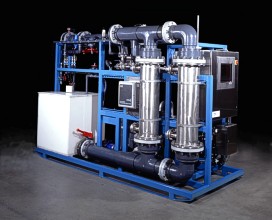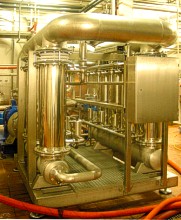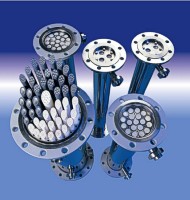"Ceramic filtration will reduce maintenance costs and improve liquid processes – an investment that will pay for itself quickly, often in one to two years."
Ceramic filters were invented in the USA during WWII by the Manhattan Project, developed for industrial use by the Europeans over the past fifty years, and are now being reintroduced into the USA. These microfilters with pore sizes from 5.0 micron to 0.2 micron are made of pure, inert ceramic that is durable, efficient and corrosion resistant. Ask us for a free sample of the material.
Pore size distribution allows molecular size filtering at high pressures to 700 psi. Maximum loading of 4000 ppm is possible. Even higher loading has been accomplished, such as apple juice pulp where juice is salvaged from previously unusable material. Any separation problem is a candidate for ceramic filtration. Silt, chemicals, acid rinse tanks, and as an RO pre-filter are excellent applications. We have installations in beverage production, cosmetics, pharmaceutical, biotechnology, semiconductor, water treatment, waste treatment and chemical processing. |




